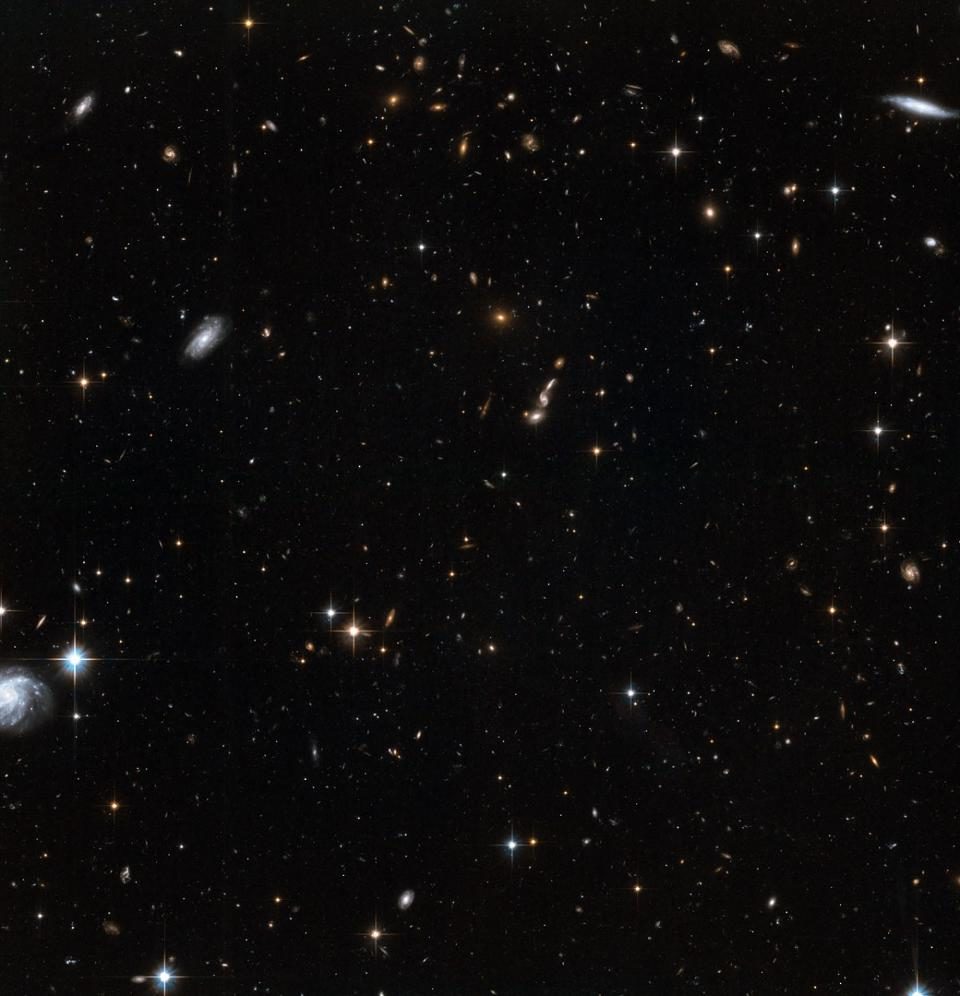
© NASA, ESA and T.M. Brown (STScI)In the Andromeda galaxy, the oldest individual stars are found in the galaxy's halo. However, globular clusters and random field stars may prove to contain the oldest stars of all in the entire Universe.
If you understand how stars work, you can observe the physical properties of one of them and extrapolate its age, and know when it had to have been born. Stars undergo a lot of changes as they age: their radius, luminosity, and temperature all evolve as they burn through their fuel. But a star's lifespan, in general, is dependent on only two properties that it's born with: its mass and its metallicity, which is the amount of elements heavier than hydrogen and helium present within. The oldest stars we've found in the Universe are nearly pristine, where almost 100% of what makes them up is the hydrogen and helium left over from the Big Bang. They come in at over 13 billion years old, with the oldest at 14.5 billion. And this is a big problem, because the Universe itself is only 13.8 billion years old.
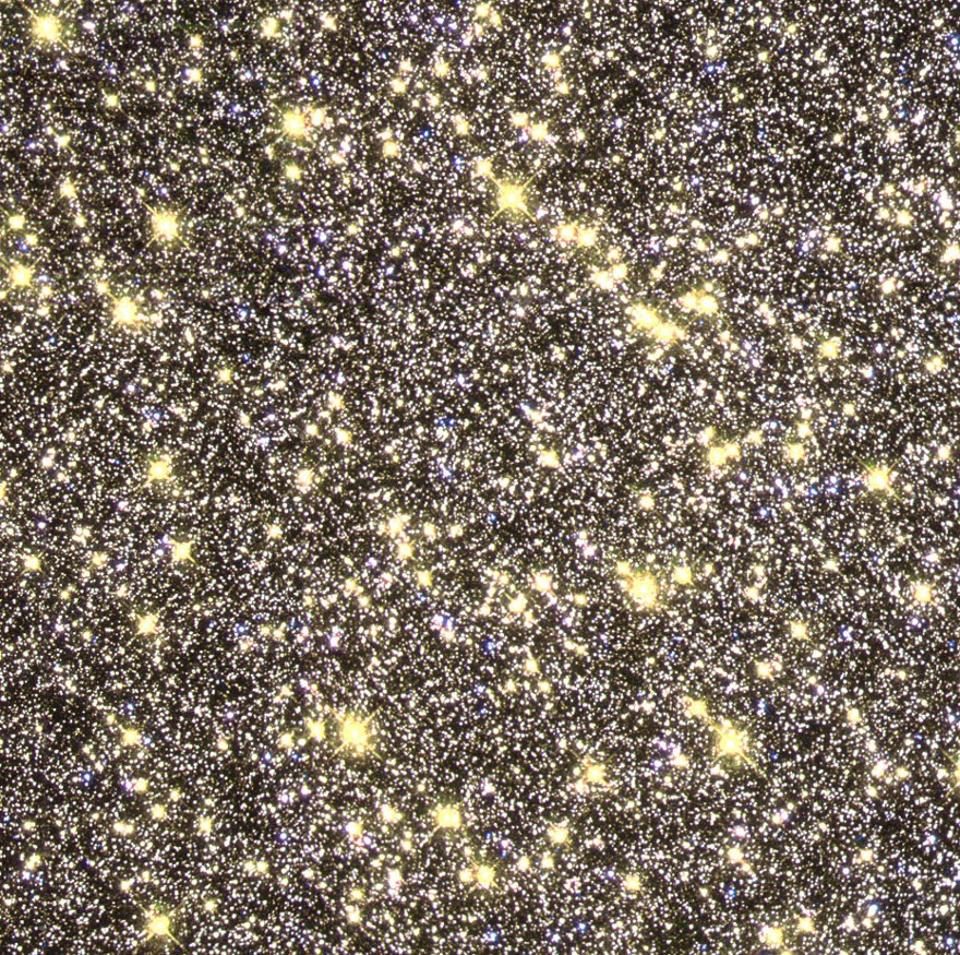
© NASA/ESA/ The Hubble Heritage Team (STScI/AURA)The core of the globular cluster Omega Centauri is one of the most crowded regions of old stars. While the stars here are over 12 billion years old, some stars are dated at more than 14 billion years of age, which is a problem because the Universe itself is only 13.8 billion years old.
You can't very well have a star that's older than the Universe itself; that would imply that the star existed before the Big Bang ever happened! Yet the Big Bang was the origin of the Universe as-we-know-it, where all the matter, energy, neutrinos, photons, antimatter, dark matter and even dark energy originated. Everything contained in our observable Universe came from that event, and everything we perceive today can be traced back to that origin in time. So the simplest explanation, that there are stars predating the Universe, must be ruled out.
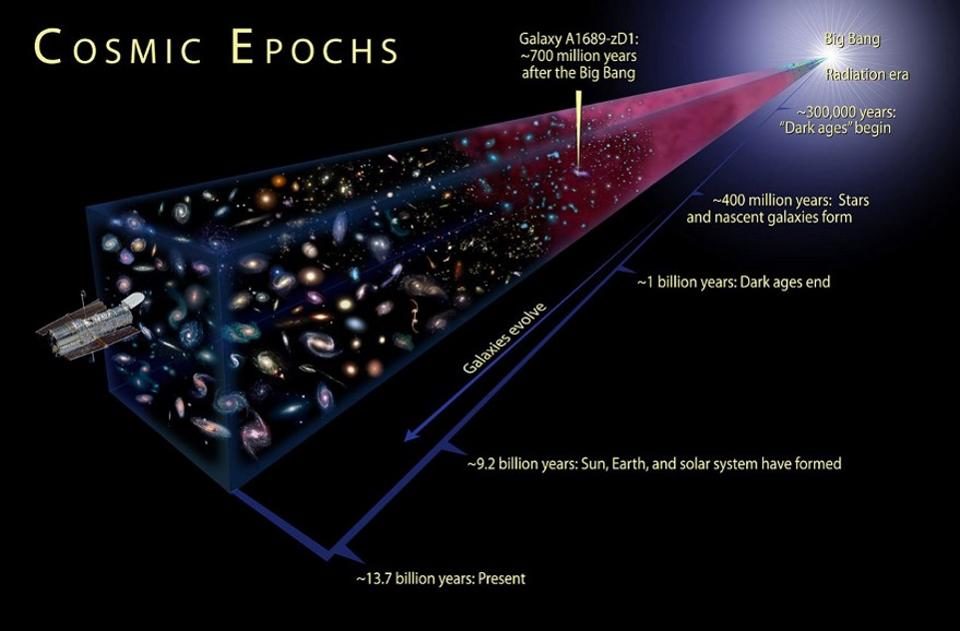
© NASA, ESA, and A. Feild (STScI)Looking back a variety of distances corresponds to a variety of times since the Big Bang. However, if the Big Bang occurred 13.8 billion years ago, then the oldest stars must be no older than that figure.
It's also possible that we've got the age of the Universe wrong! The way we arrive at that figure is from precision measurements of the Universe on the largest scales. By looking at a whole slew of features, including:
- The density and temperature imperfections in the cosmic microwave background, left over from the Big Bang,
- The clustering of stars and galaxies at present and going back billions of light years,
- The Hubble expansion rate of the fabric of the Universe,
- The history of star formation and galactic evolution,
and many other sources, we've arrived at a very consistent picture of the Universe. It's made up of 68% dark energy, 27% dark matter, 4.9% normal matter, about 0.1% neutrinos and 0.01% radiation, and is right around 13.8 billion years old. The uncertainty on the age figure is less than 100 million years, so even though it might be plausible that the Universe is slightly older-or-younger, it's extraordinarily improbable to get up to 14.5 billion years.
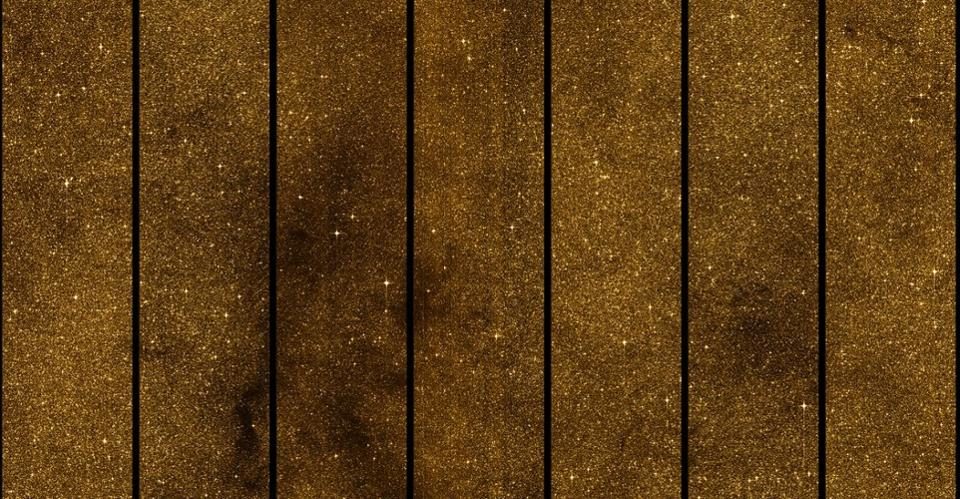
© ESA/Gaia/DPACThe ESA's Gaia mission has measured the positions and properties of hundreds of millions of stars near the galactic center, and is finding evidence of some of the oldest stars known to humanity present in this environment.
So that leaves only one reasonable possibility: perhaps we have the ages of the stars wrong. We've observed literally hundreds of millions of stars in detail, all throughout various stages of their life cycle. We know how stars form and under what conditions; we know when and how they ignite nuclear fusion; we know how long the various stages of fusion last and how efficient they are; we know the lifetimes and how to recognize the death throes of stars of all sorts of different masses. In short, astronomy is a very robust science, particularly when it comes to stars. In general, the oldest stars are identifiable for being relatively low in mass (less massive than our Sun), having very low metal contents (elements other than hydrogen or helium), and should even predate the galaxy itself.
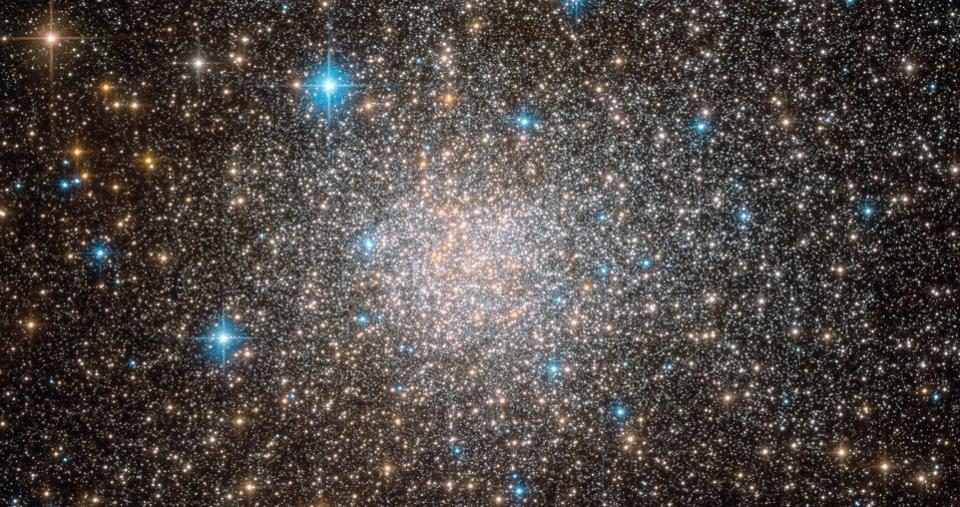
© NASA/ESA/Hubble/F. FerraroA selection of the globular cluster Terzan 5, a unique link to the Milky Way's past. Incredibly old stars can be found within globular clusters, relics of some of the first 'bursts' of star formation to occur in our vicinity of the Universe.
Many of them are found in globular clusters, which have been confirmed to contain stars in excess of 12 billion or, on rare occasion, even 13 billion years. A generation ago, people claimed these clusters were anywhere from 14-to-16 billion years old, creating tension in the accepted cosmological models, but improved understanding of stellar evolution has brought these numbers back into line. We've also developed more advanced techniques as our observational capabilities have improved: by measuring not only the carbon, oxygen, or iron content of these stars, but by using the radioactive decay abundances of uranium and thorium, in conjunction with the elements created in the Universe's first supernovae, we can date many individual stars directly.
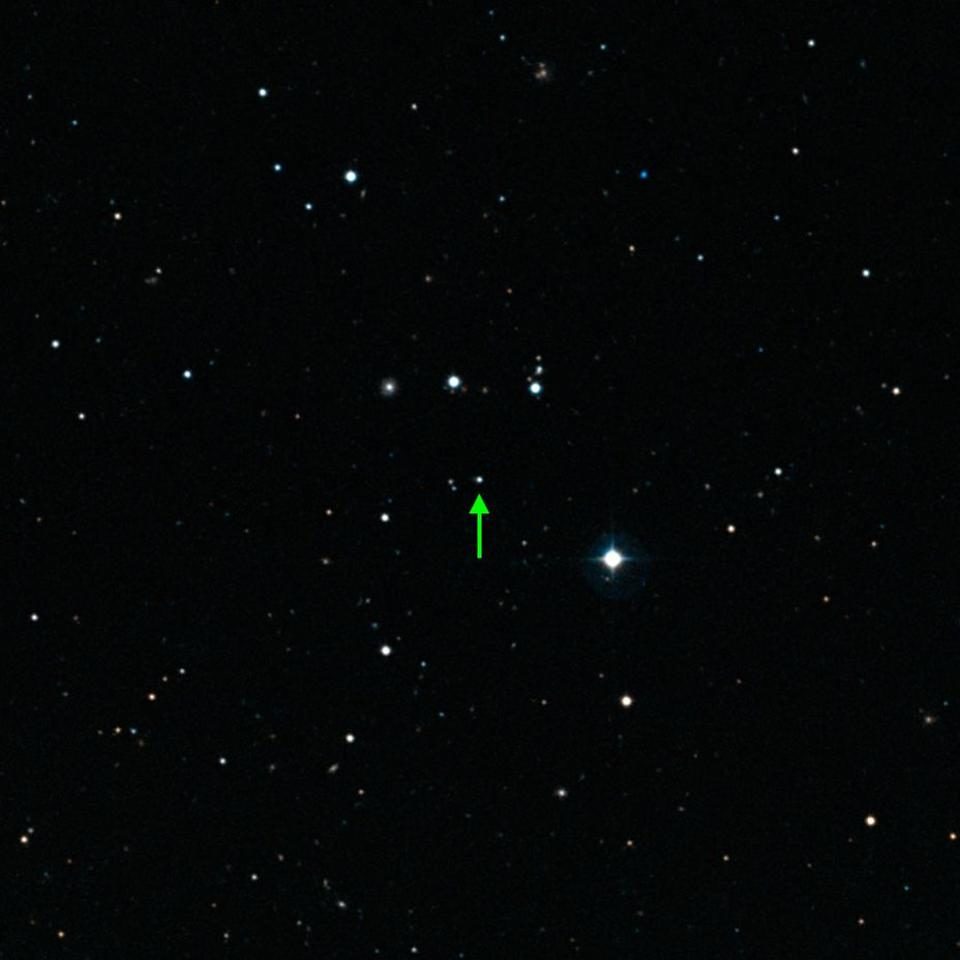
© ESO, Digitized Sky Survey 2Located around 4,140 light-years away in the galactic halo, SDSS J102915+172927 is an ancient star that contains just 1/20,000th the heavy elements the Sun possesses, and should be over 13 billion years old: one of the oldest in the Universe, similar to but even more metal-poor than HE 1523-0901.
In 2007, we were able to measure the star
HE 1523-0901, which is about 80% of the Sun's mass, contains only 0.1% of the Sun's iron, and is measured to be 13.2 billion years old from its radioactive element abundances. In 2015, a set of nine stars near the Milky Way's center were dated to have formed 13.5 billion years ago: just 300,000,000 years after the Big Bang, and before the initial formation of the Milky Way. "These stars formed before the Milky Way, and the galaxy formed around them," said Louise Howes, co-discoverer of these ancient relics. In fact, one of those nine stars has less than 0.001% of the Sun's iron; this will be exactly the type of star and the classes of stellar population that the James Webb Space Telescope will look for when it launches in October of 2018.
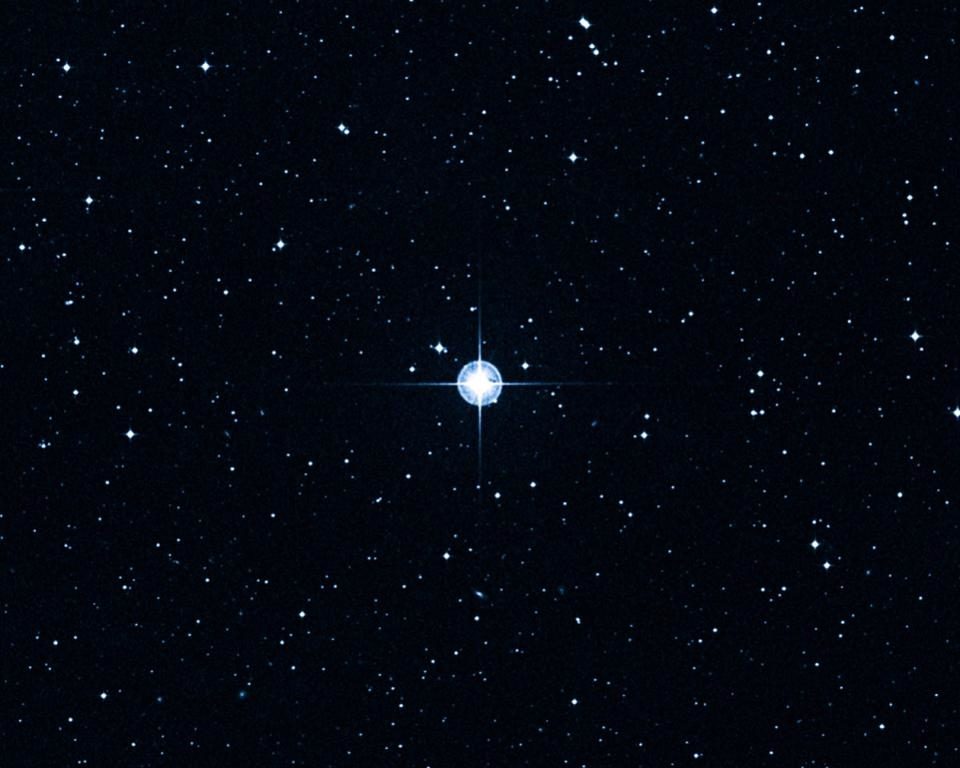
© Digitized Sky Survey (DSS), STScI/AURA, Palomar/Caltech, and UKSTU/AAOThis is a Digitized Sky Survey image of the oldest star with a well-determined age in our galaxy. The ageing star, catalogued as HD 140283, lies over 190 light-years away. The NASA/ESA Hubble Space Telescope was used to narrow the measurement uncertainty on the star's distance, and this helped to refine the calculation of a more precise age of 14.5 billion years (plus or minus 800 million years).
But the most confusing star of all is
HD 140283, informally nicknamed the Methuselah star. At just 190 light years away, we can measure its luminosity, surface temperature, and composition very precisely; we can also see that it's just beginning to evolve into the subgiant phase and towards becoming a red giant. These pieces of information, combined, allow us to get a well-constrained value for the star's age, and the result is disturbing, to say the least: 14.46 billion years. Yet some of the other properties it displays, like an iron content of 0.4% the Sun's, suggest that it's very old, but not quite among the very oldest stars of all. Although there is an uncertainty on the age of around 800 million years, that still places it uncomfortably early, and hints at a potential conflict between how old the stars are and how old the Universe is.

© Digitized Sky Survey (DSS), STScI/AURA, Palomar/Caltech, and UKSTU/AAOThis is a Digitized Sky Survey image of the oldest star with a well-determined age in our galaxy. The ageing star, catalogued as HD 140283, lies over 190 light-years away. The NASA/ESA Hubble Space Telescope was used to narrow the measurement uncertainty on the star's distance, and this helped to refine the calculation of a more precise age of 14.5 billion years (plus or minus 800 million years).
Now, it's always possible that there's something fishy that happened in the star's past that we can't know about today. It's possible that it was born as a higher-mass star and something stripped the outer layers off, reducing the star's lifetime precipitously. It's possible that the star absorbed some material later-in-life that changed its heavy element content, skewing our perceptions today. Or it's possible that we've got a misunderstanding in the subgiant phase of the stellar evolution of these old, low-metallicity stars. These unknowns (and in some cases, unknowables) are possible sources of errors when we try and compute the ages of the oldest stars.
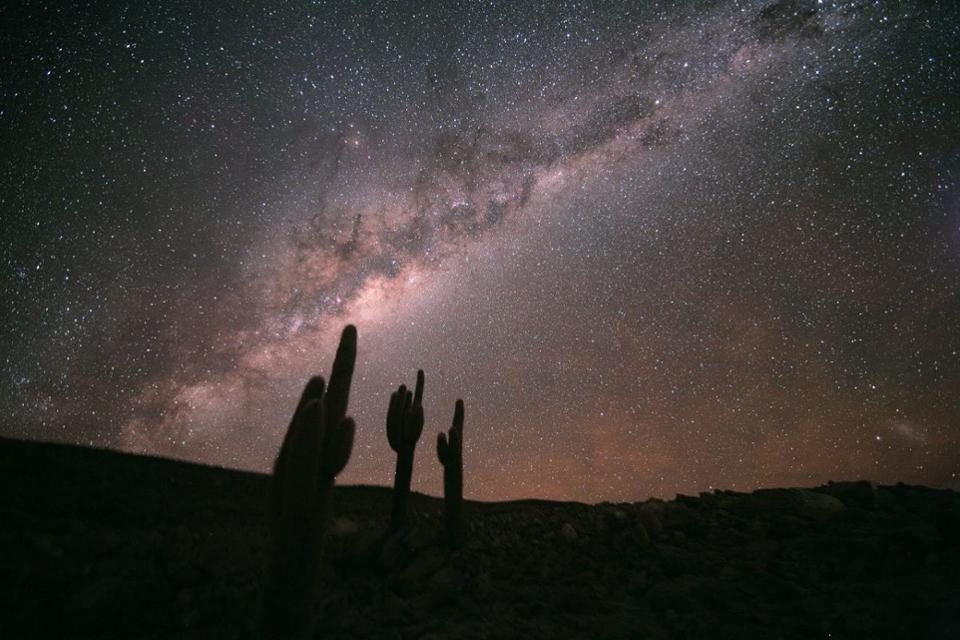
© ESO/S. GuisardMilky Way, as we know it today, hasn't changed much in billions of years. But as the stars age, the more massive ones end their lives, and less massive ones begin to evolve into subgiants. That 0.8 solar mass stars are beginning to evolve suggests something troublesome about the age of the Universe.
But if we've got these ages right, there might potentially be a problem. You can't have a star that exists in our Universe that's older than the Universe itself. Either something's wrong with our estimates for the ages of some of these stars, something's wrong with our estimates for the age of the Universe, or something else, that we're not even considering, is off.
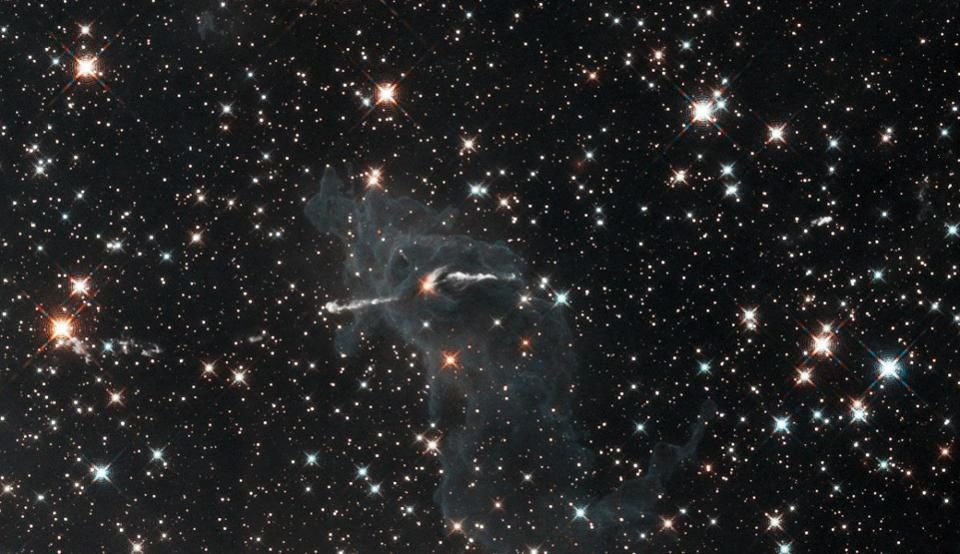
© NASA, ESA and the Hubble SM4 ERO TeamWhile infrared surveys are often use to image dusty objects, peering inside, they're also incredibly useful for highlighting the properties of older, cooler stars. The oldest star in the Milky Way is likely yet to be discovered.
While infrared surveys are often use to image dusty objects, peering inside, they're also incredibly useful for highlighting the properties of older, cooler stars. The oldest star in the Milky Way is likely yet to be discovered.
Regardless of what the resolution is, this is an important and extremely valuable situation for a scientist to be in. The stars themselves should place a lower limit on the age of the Universe; the Universe itself ought to be older. That this isn't what we're seeing with absolute certainty creates a beautiful tension that may well prove to be an omen of extraordinary scientific advance. Whether we learn something new about stars and how they live, evolve, and die; whether we learn something new about the Universe's age; or whether there's a third factor that's responsible for this misunderstanding, there's the opportunity to improve our scientific understanding of the Universe. In the end, that's the greatest situation any curious individual can hope to find themselves in. What seems like an impossibility might prove to be something even more valuable: a chance to push our knowledge of how the Universe works into hitherto unknown frontiers.
Astrophysicist and author Ethan Siegel is the founder and primary writer of Starts With A Bang!
His books, Treknology and Beyond The Galaxy,
are available wherever books are sold.













Reader Comments
As Zohar mentions, check out the Electric Universe theory by the Thunderbolts team.
I have never understood why it is so hard, so unacceptable to say "I/we don't know"...Instead put fourth your wild theory, the most popular becomes fact and truth and printed in textbooks and quoted by nerds.
Ay, but there's the rub!
Stars are powered by colossal filaments that power strings of Galaxies.
Red shift exists, but is not solely caused by motion away from the observer. The lowest values, negative being red and positive being blue, are a reflection of the Quantum energy states in that matter. Older matter has more energy. It therefore has a larger value.
The "Big Bang" (how the boys like to magnify penis size!) was merely a small motion of the Aether: any movement creating EF, Electroagnetic Force, wheich accelerated the initial "instability". Aether is also Awareness or Consciousness. All things are made of Aether. When it is vibrating, it is "energy". When that is bound in a toroidal self renewing pinch, it is matter. Waves, not particles. Science will make massive strides once we can measure and properly observe wave motion, simultaneously at macro and micro levels. Our current methods of observing means that we chop the waves into quantities, which we call atoms, protons electrons.
Powered by filaments, agreed, but galaxies may not be as advertised. Some food for thought may be found in the book "Revolution in Astronomy", by the late Bahram Katirai. I think our solar system, seen from a distance, might well look like a galaxy, and all galaxies are likely just solar systems along those filaments.
Colin maintains a great site that you will like: Fractaluniverse [Link] He is friendly, but has reservations...
...so if they're hurtling away from each other, why are they still like sardines in a can over there in Omega Centauri??
And why is Omega Centauri so close, in relative terms of course, to us...? Or why are we seemingly so close to the oldest part of the universe?
There's definitely something fishy going on here. IMHO and with the caveat that I know just about nothing astronomy-wise.
I've always had a big soft spot for Sir Fred Hoyle. He was a commonsensical Yorkshireman, not given to fads and fancies. I'd bet on him being right.
[Link]